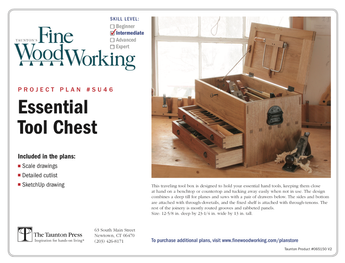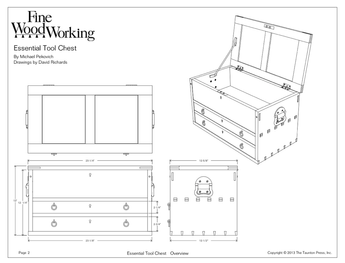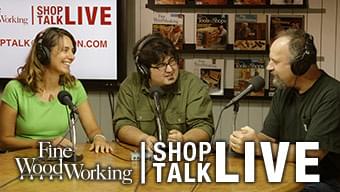Ok this might be tough to explain but here goes.
I am trying to figure out how people cut out drawer fronts from a single piece of wood.
Ok picture a peice of wood thats 6 inches tall and 2 feet long. Imagin cuttting a smaller square out of that center of the larger peice say 4 inches tall and 1 foot long. So the grain matches across the whole piece. (is this making sense)
I have uploaded a pic that shows what i am talking about.














Replies
wiskytango,
Several ways to do this.
Simplest is to simply rip down the top and bottom of the drawer line and then crosscut the drawer front out and glue the face back together. Thin kerf blades and fairly straight grain and the result is nearly invisible.
Other wise, you can use a japanes saw that can make a plunge cut, use a jigsaw and make a plunge cut, or buy a festool circular saw and make a plunge cut.
Drill a small hole at the corners and use a fret or coping saw.
Lots of ways to do this, each has advantages and disadvantages.
Mike
It's also possible that the desk in the photo is veneered.
-Steve
True but if its solid what is the best way? And by best i mean easiest.
Rip-n-Reglue....
I had to do this for a cedar chest I made. It had Three drawers at the bottom. I had to make three fronts and I wanted it to be the focal point. I took the board with the best grain character and set it as the center of the middle drawer which was larger than the two others. I then basically radiated out left and right from that center spot. The drawer front was only 5" tall (if I recall correctly). The board I used was almost 8" wide. I put that one highly grained feature dead center vertically and horizontially and worked out and down. I used chalk to outline the pieces, and allowed for error on the far left and right, but only the width of the blade for the two cuts that seperated the left and right drawers (to keep the grain flow continuous). In the end the flow was perfect. Unfortunately the finish was dark, so it was harder to appreciate, but it was noticable. I had quite a bit of waste to get that perect section to make the drawer fronts, but it was worth it in the end. Hope I got across what I was trying to get across.
To help visualize, you can take white cardboard and cut out the section that matches the dimension you want and put it on the board to get an idea of how it would look cut out. Some times that helps.
If it moves, tax it. If it keeps moving, regulate it.
And if it stops moving, subsidize it.
We routinely do this by ripping and re-gluing the parts as needed. Even with a TK blade you will lose some net width and length so start with a piece that is a bit overized in both dimensions.
David Ring
http://www.touchwood.co.il/?id=1&lang=e
This forum post is now archived. Commenting has been disabled